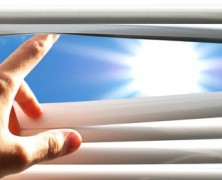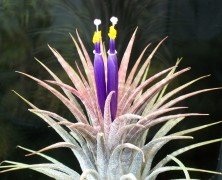It seems every day the LED industry is crossing new boundaries, reaching new thresholds, and brightening an expanding horizon. Adding one more reason for optimism, we’d like to share news about the latest developments in integrated daylight harvesting with LEDs. Integrated LED/daylight systems use sensors to assess how much natural light is entering a room, adjusting the LED system accordingly to reach a desired light level. Basically, these integrated lighting systems improve indoor lighting systems by optimizing artificial light in combination with natural light. The benefit of this system is that it significantly reduces business and consumer energy consumption costs, while greatly improving quality and functionality over conventional lighting set-ups. On their own, high quality LED lights already produce light 80% more efficiently than incandescents. Conventional incandescents actually waste 80% of the energy they require by producing heat rather than light. On this basis alone, it’s clear that LEDs present a huge opportunity for energy savings. With electricity production as the single largest contributor to CO2 emissions, accounting for 38% of U.S. emissions from 1990-2012, the reduction in usage afforded by LED lighting has an enormous environmental impact. But by using natural lights when possible, capitalizing on integrated daylight harvesting with LEDs, the already astonishing energy savings of this revolutionary lighting technology are even greater. Intelligent controls represent one of the greatest advancements brought to us by LED lighting systems. Through digital programming and networked management, LED lighting systems can easily be adjusted to meet predetermined factors. LEDs are superior to CFLs for networked management because they can be turned off and on easier, and can also be finely adjusted. Not only that, but the quality of light produced by many LEDs is actually closer to sunlight than most CFLs, which is another reason people are turning...
How LED Lights Are Helping Address Climate Change...
posted by Flexfire LEDs
In New York City, 300,000 to 400,000 people recently took to the streets calling for action on climate change. These concerned world citizens would be pleased to note that as we shift away from inefficient incandescent bulbs, those who choose LED lights are helping address climate change by minimizing humanity’s environmental impact. Electricity production is the single largest contributor to CO2 emissions, accounting for 38% of U.S. emissions from 1990-2012. LEDs help us address climate change by lowering our electricity demand and therefore lowering our CO2 emissions. While installing LED strip lights in your kitchen won’t stop global warming, if you choose to make the investment in LEDs, you’re doing your part to slow its progress. Here are the top environmental reasons for choosing LEDs over other conventional lighting sources: Energy Efficiency High quality LED lights work at 80% efficiency. That means that 80% of the electricity used by an LED chip goes straight into producing light. Compare that to an incandescent bulb, which in many cases is just 20% efficient — 80% of the electricity used is transferred into heat instead of light. The U.S. Energy Information Administration estimates that in 2012, lighting constituted 17% of the total energy used by homes and businesses in the United States. Switching our lights over to LEDs, making them use electricity with 80% more efficiency, would have a dramatic impact on our CO2 emissions. There are other cases where LEDs will come in handy as well, such as LED refrigerator display lighting and poultry farming, where we can further lower energy demands since cool LED running temperatures require less artificial cooling. Furthermore, LEDs produce directional light, meaning light isn’t wasted in directions where it isn’t needed. Less Waste The typical lifespan of an incandescent bulb is 750 to 1,000 hours. CFLs,...
DIY LED Grow Lights Using Flexible LED Strips...
posted by Flexfire LEDs
“There’s nothing quite like the pleasure you get from plants and flowers,” he said to himself. “They certainly do cheer you up.” ― Charmian Hussey, The Valley of Secrets Over the years we’ve had many customers come to us with questions about DIY LED grow lighting. Taking care of plants is a pleasurable activity that can provide food for a family or offer a portal to nature within the home. Not only that, but being around plants actually increases memory retention and emotional stability. LED lights provide a rich, full spectrum light, are extremely energy efficient, provide even, directional light distribution and emit very little heat — leading to a less expensive garden with richer results. Those interested in indoor gardening should follow these steps to build a DIY LED grow light guide using Flexfire LEDs strip lights. DIY LED Grow Light Parts: UltraBright™ 24v Architectural Series LED strip lights* Aluminum bars for heat dissipation Adhesive pads Silicone RTV silicone Nylon ties Solderless LED strip connectors (strip-to-strip and strip-to-power) Female coaxial connector with screw terminals for wiring 24v LED strip light power supply * Even when working in an indoor environment, consider Outdoor 24v Architectural LED strip lights to protect against humidity and also allow for easier cleaning DIY LED Grow Light Directions: Start by cutting the strip lights to match the width dimensions of your project. Check for markings after every third chip to locate the appropriate place to make your cut. After that, peel off the paper over the adhesive backing and attach the strips along the aluminum bar mounting. The aluminum will act as a heat sink, protecting your plants from excess heat and extending the lifespan of the LED chips. From here, attach solderless connectors to the strip lights. For added stability, tie down...
LED Lighting Health Benefits...
posted by Flexfire LEDs
Earlier this month at the 2014 Consumer Electronics Show, the Rensselear Polytechnic Institute’s Smart Lighting Engineering Research Center demonstrated a personal light measurement system that will assist in accurately monitoring the body’s circadian rhythm. Designed for Google Glass, the prototype captures an individual’s light exposure and biometric signals, then sends this information to an Android app. The app then provides information that will help the individual achieve better sleep cycles, in turn leading to improved overall health and productivity. This project is the latest of many to explore LED lighting health benefits. So what do LED lights have to do with this? Among all light sources, LEDs are unique in that they can be tuned to control light direction, color temperature, and overall illuminance. LEDs thus play a key role in so-called “human-centric lighting”, which examines lighting exposure as a means to address modern health issues. This is particularly relevant given the ever-increasing amount of time we spend indoors, not to mention the fact that many in the Northern Hemisphere live with little to no sunlight each winter. Imagine this: you live in northern Sweden, where prolonged periods without daylight turn you into a depressed, grumpy, unproductive mess. Along comes a device that measures your personal light intake each day, then automatically tells your home lighting system how much and what sort of light your body needs to function properly. Sounds like science fiction, right? Check out RPI’s Healthy Home Project in Sweden. According to a report published in part by LightingEurope, the use of human-centric lighting helps improve sleep, increase productivity, accelerate healing and even prevent some chronic diseases. LEDs promise to play a central part in this exciting new field of research, and it will be interesting to see where this takes us...









